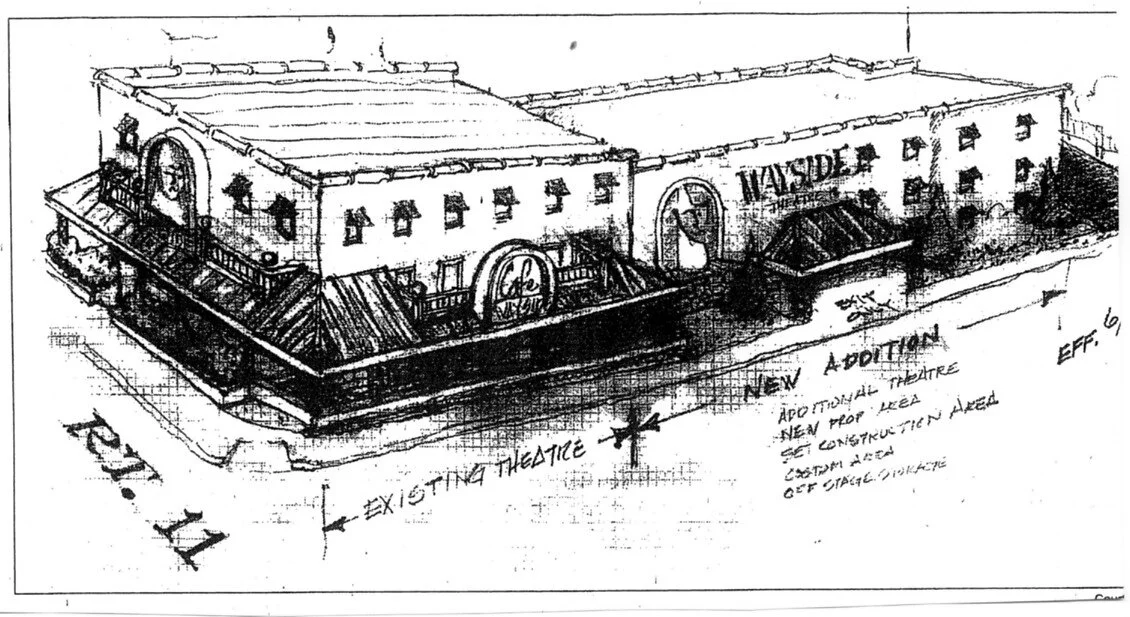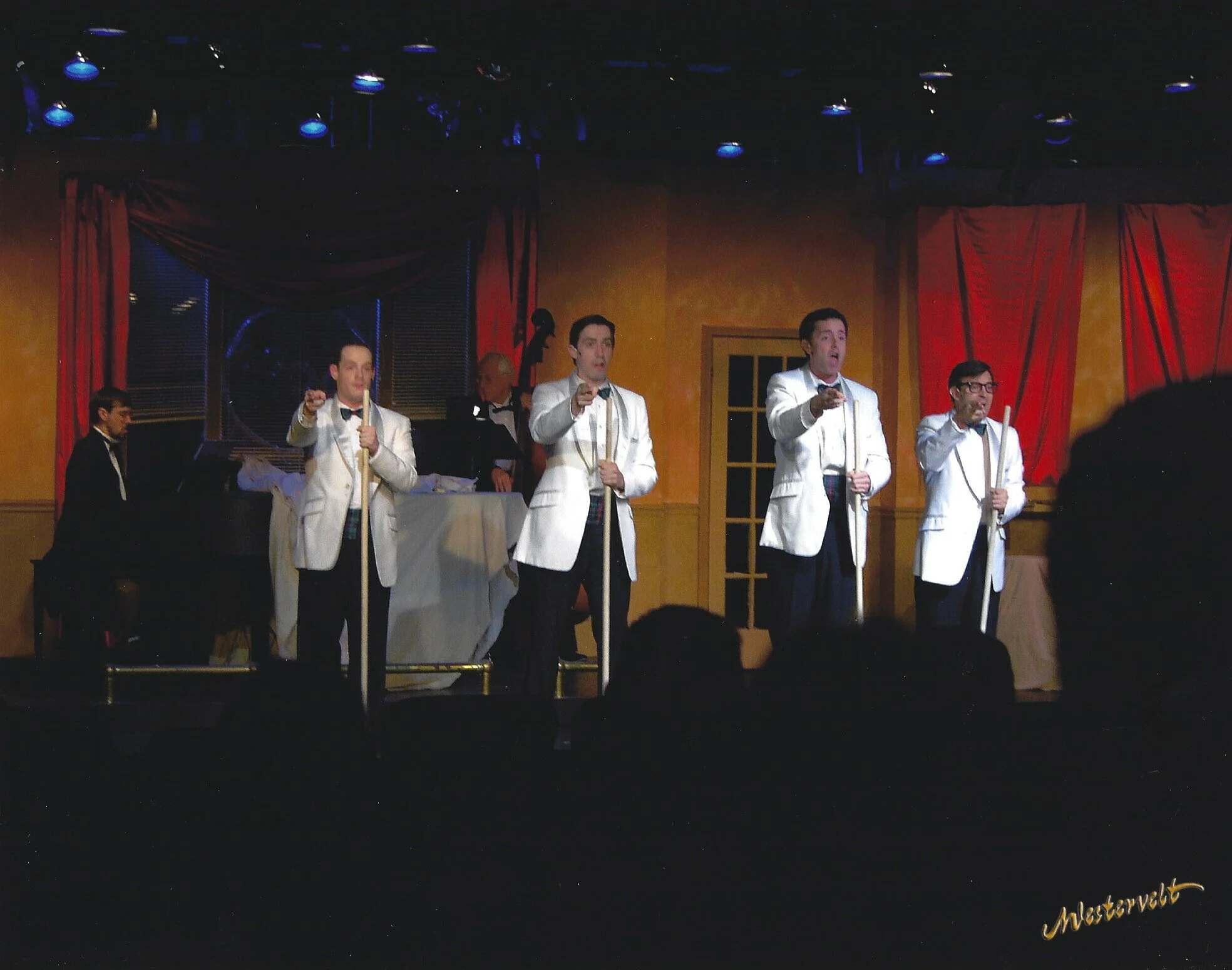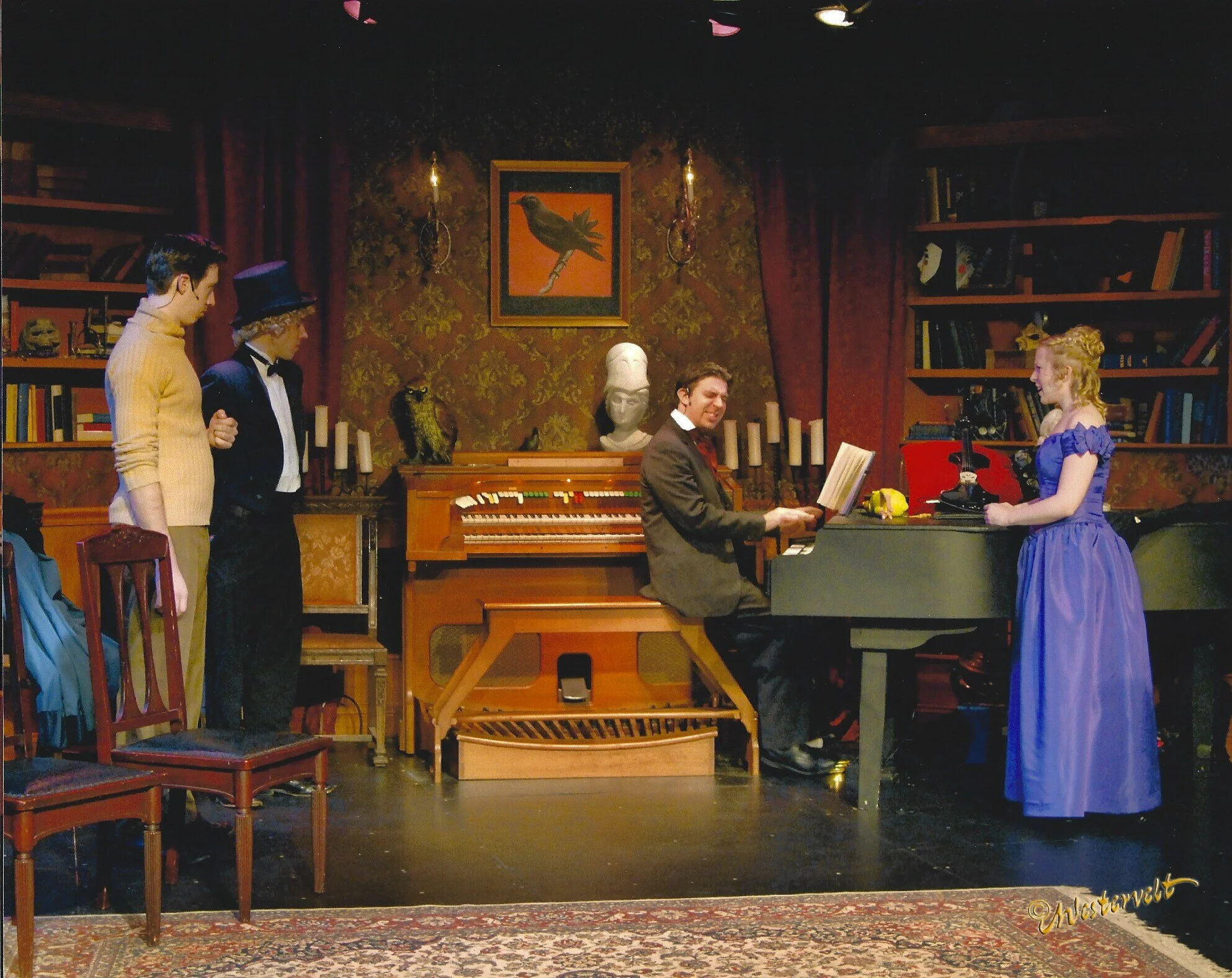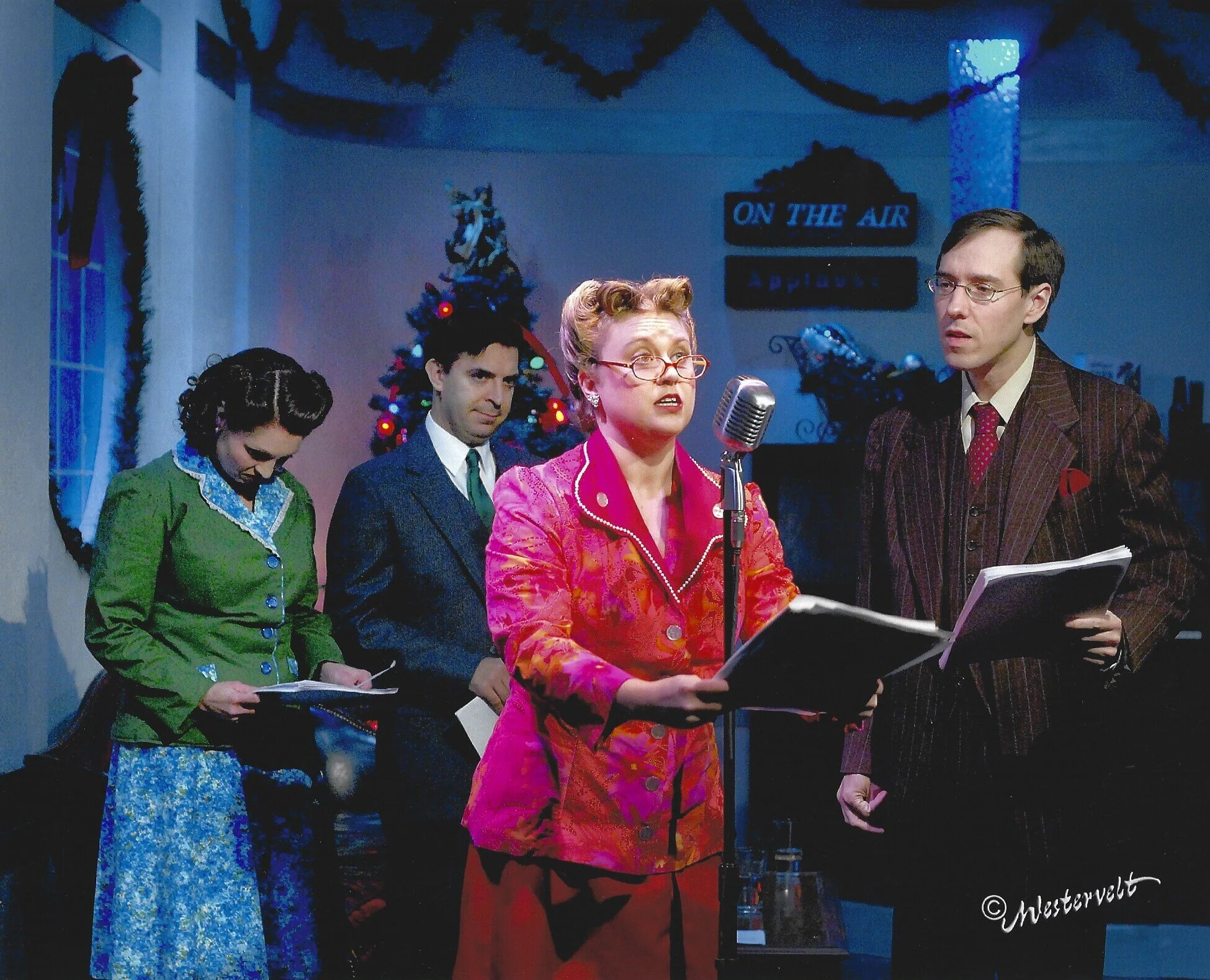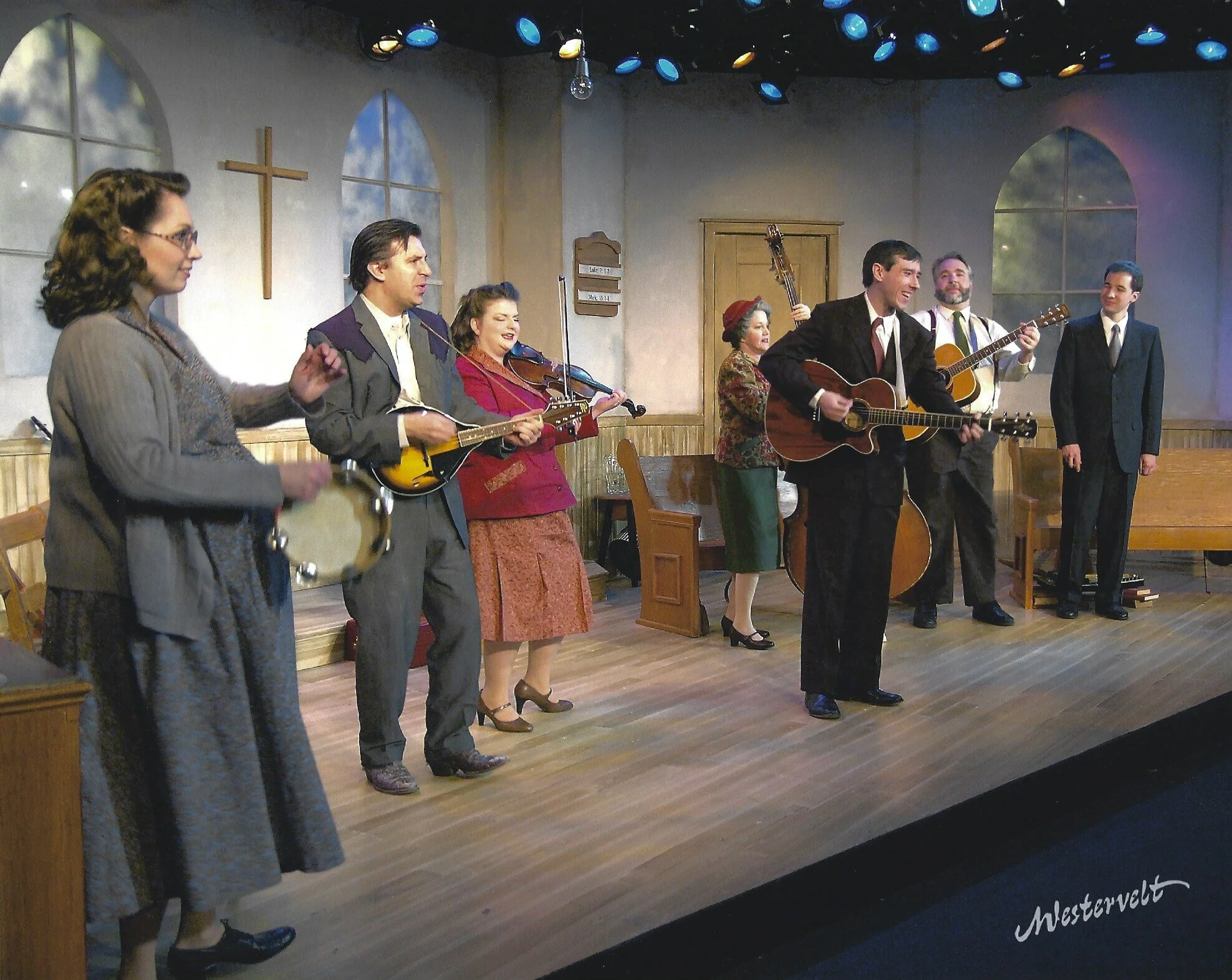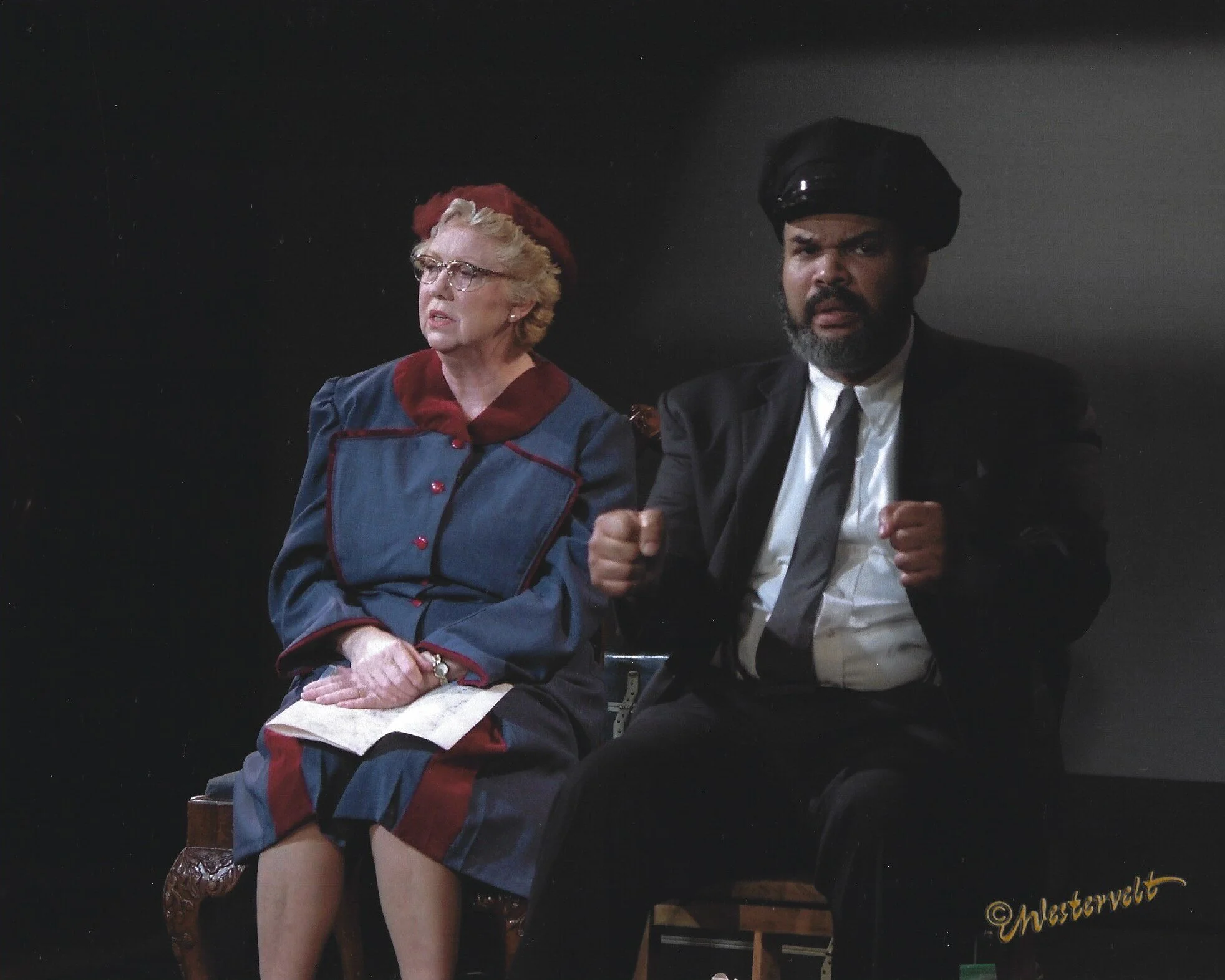Warner Crocker: 2007-2008
Before the theatre season opened, the Rotary Club hosted a Kaleidoscope Gala at the Winchester Country Club. Of the money raised, the Rotary Club retained 25 per-cent of the proceeds for their various projects and divided the remaining funds equally between the Winchester Little Theatre and the Wayside Theatre. The portion Wayside received was channelled towards the proposed theatre expansion, for which groundbreaking was scheduled for November of 2007 (Wilder. “Rotary Club gala …. TWS. 19 Mar. 2007).
The 2007/2008 season is the only time in Wayside’s history where no performances were held in Middletown, as the theatre building was undergoing a thorough renovation. The entire season took place in near-by Front Royal in a location that became known as the Royal Phoenix. Til Turner, resident set-designer, recalls that in addition to designing the sets for the Front Royal productions, it was first necessary to create a theatre space in the former office building of Avtex Fibers, where the productions would take place.
While the season was taking place in Front Royal, the Middletown building was undergoing a thorough renovation. The stage area was enlarged by pushing the rear wall of the building back a few feet, thus allowing, for the first time in the theatre’s history, the ability for an actor to exit stage right and enter stage left without having to go out doors! Other changes were not so obvious, such as the complete removal of all asbestos insulation, new wiring, new plumbing, and the like. More visible changes included new seats in the theatre, the renovation of bathroom space, and a very impressive (and excellent) lighting grid.
Proposed expansion plan with existing theatre in the front and the addition at the rear.
The renovation was the first step in a plan that would also enlarge the present building and create a second performing space that contained enlarged dressing rooms, an area for set building, and costume construction. A ground breaking ceremony for the expansion took place in November, 2006 which included the demolishing of the two small buildings at the back of the Theatre: the cinder bloc building used for set construction; and the small frame building, known as the Love Shack, which had been originally used for actor housing and later as a storage space for sets. The paint-deck, dating from the 1960s was also removed. Unfortunately, funding did not materialize and the planned expansion of the theatre did not take place.
A few years later, when the theatre building was sold and converted into a brewery, there were reports that the renovation had not been as thoroughly done as previously thought, as there was evidence of shoddy workmanship.
Tuesdays with Morrie. Aug. 10 - 26, 2007. Matthew Eisenberg, James Laster (standing).
It was also hoped that the Front Royal site, known as the Royal Phoenix, would be a step in providing Wayside with two performance locations. But, by the end of the season, the proposal to make this dream a reality had failed. During the Front Royal period, the Glaize Black-box Theatre space at Shenandoah University was used for two productions. This came about through the generosity of the University as the Shenandoah Summer Music Theatre season was completed and there were three weeks before the opening of the school year when that space was not being used. The Glaize location was used for the mounting of two productions: Tuesdays with Morrie in 2007/2008 and Moonlight and Magnolias the following year.
Wayside opened the season in Front Royal with a production of Forever Plaid. Prior to the opening curtain, a champagne and dessert gala reception was held to celebrate live theatre in Front Royal, which had not taken place since the demise of the Front Royal Little Theatre in the 1980s. At the reception, Crocker hinted that the renovation of the empty office space into a theatre was so nice, they might just keep it as a second performance location (Seabrooke. “Gala opening at ….” TWaS. 28 June 2007).
Forever Plaid. June 23 - September 30, 2007. Jim Bray (L), Vaughan Irving, Michael Hadary, Larry Dahlke.
This was the third time Forever Plaid had appeared at Wayside, the other productions were in 1995 and 1998. In Eller’s review, she singles out each member of the quartet and makes comments, particularly Jim Bray “who sang the love song, ‘Cry,’ [and] surprising the audience by cutting loose towards its end with a voice that sounded twice as big as he looks.” In her conclusion she stated, “The entire cast turns in a performance that gives life to a show that in less talented hands could have flat characters in a thin story line” (Eller. “It’s a plaid, plaid, ….” TWS. 3 July 2007). Another writer praises the director for casting such strong actor/singers, writing “Warner Crocker’s deft direction and four superb-singing dancing hot-dogs with split hair comic timing make this one of the most entertaining shows in the galaxy … ’Forever Plaid’ proves it can be a many-splendored thing” (Lawrence. “Night and day ….” CSE. 17 Aug. 2007).
As Forever Plaid was beginning the second month of its run in Front Royal, Tuesdays with Morrie opened at the Glaize Black Box on Shenandoah University’s campus. This was a second time that Wayside ran two productions simultaneously. Morrie was a 90 minute play without intermission and “took the audience on an emotional journey, humorously but with a serious vein.” Both actors were credited for their strong and believable acting “performed expertly on a stage with the barest of props -- enough to give the impression, but not distract from the compelling action” (Lowe. “Strong writing, acting make ….” TWS. 22 Aug. 2007). At some of the Morrie performances a representative of PALS (People with ALS) attended and would meet people following the performance who might be interested in learning more about the disease.
Shadow of the Raven. Oct. 14 - Nov. 10, 2007. Vaughan Irving, Steve Przybylski, Larry Dahlke, Anna Marie Well.
At the performance space in Front Royal, the premier of a new work took place -- Shadow of the Raven, script and music created by resident musician, Steve Przybylski. The story was a “potpourri of more than 15 of Poe’s … most bone-chilling stories, novels, and poetry” (Dunham. “Original production based …” TWS. 20 Oct. 2007). The use of the theremin, a high pitched, whining electronic instrument, added a great deal of color to the music and enhanced the mystery of the plot. The consensus of most of the press was that, while they admired the writer’s creativity and the director’s choices, they felt that some editing or perhaps a work-shop of the script would have benefitted the performance.
It’s a Wonderful Life. Nov. 24 - Dec. 23, 2007. Thomasin Savaiano (L), Larry Dahlke, Sarah Blackwell, Steve Przybylski.
The Christmas show at the Royal Phoenix was the staging of the familiar story, It’s a Wonderful Life: a Live Radio Play. Five actors play a myriad of characters who tell the story, do the commercials, and are supported by a Foley Table that provides the sound effects for the broadcast. As was Wayside’s tradition, all the roles in the show were double-cast. After singling out and commenting on each actor, one reviewer concludes that “The players looked right at home in the WBFR studio, thanks to period costuming of Tamara M. Carruthers and Til Turner’s set design” and recommends attending a performance as being good family fare (Sackrider. ‘Radio Broadcast of ….” PG. 30 Nov. 2007). Another reviewer noted that by attending a play set up as a radio show, their is “… a certain fascination, watching the five actors scurry around the studio, juggling multiple roles - - and voices - - and contending with an array of sound effects that need to occur at a precise time to augment the dramatic effect of the play” (Horan. “Familiar film little changed ….” NVD. 29 Nov, 2007). It was a most enjoyable evening!
Smoke on the Mountain - Homecoming. Jan. 31 - Mar. 29, 2008. Thomasin Savaiano (L), Larry Dahlke, Elizabeth Albert, Pam Pendleton (bass), Steve Pryzybylski, Richard Follett, David Maga.
The third title in the Sanders Family series, Smoke on the Mountain – Homecoming, began the new calendar year with a two-month run at the Royal Phoenix. Although there were many familiar faces appearing in the cast, the actors were cautioned by director, John Haeley, not to fall back into the trap “of going back to what’s familiar.” They were urged to think about what had taken place in the character’s lives since the previous Sanders Family show closed, which was the beginning of World War II, and now, which is much later in a more prosperous era (Outlaw. “Smokin’ “ NVD. 24 Jan. 2008). While feeling that cutting a few of the songs in the show would be a benefit, one critic states the “strength of the production is in the prodigious musical talents of the cast. Voices are sublimely blended and all the players perform on multiple instruments.” She concludes, “Take it for all and all, this is an excellent production of a sometimes sprightly, sometimes draggy script” (Lawrence. “Sanders family still ….” CSE. 1 Feb. 2008).
Driving Miss Daisy. April 5 - 26, 2008. Faith Potts, Elliot Dash.
Driving Miss Daisy, which had been performed at Wayside in 1990, was the closing production for the 2007/2008 season in Front Royal, and featured three Wayside veterans: Faith Potts, James Flemming, and Elliot Dash. The intimate setting of the Royal Phoenix was the perfect location for this work and it received high praise in all the reviews. The set was quite simple - - a desk, a lamp, [and] the car, where much of the action takes place, which was only two chairs. A scrim was quite helpful in visualizing outdoor images, “encouraging audiences to use their imaginations in this fine productions …” (Eller. “Solid, skillful performances ….” TWS. 10 Apr. 2008). Another writer proclaims that, while the play is a gem in itself, “the Wayside team, has painstakingly and lovingly polished to reveal its every intricate facet. The casting is flawless, the technical effects exemplary” (Horan. “Wayside’s ‘Daisy’ is ….” NVD. 10 Apr. 2008).
Wayside’s one and only season outside of Middletown came to a close on April 26, 2008 with the closing of Driving Miss Daisy. The space was cleared of any theatre-related materials, and the focus shifted to reopening of the Middletown facility. It was once thought that the Royal Phoenix could have become a second performance venue for the Theatre. The main reason this did not happen can be blamed on finances - - the status of the Theatre’s finances, the inability of the Front Royal city council to provide funds, the downturn in the nation’s economy, and the cost that the theatre would have to face if it attempted to run two locations.
A letter written by Cephe Place, the Sales and Outreach Coordinator for Wayside Theatre, appeared in both The Winchester Star and the Northern Virginia Daily. She reflects on the sad event of turning out the lights and closing the Royal Phoenix and writes, It was our hope to be able to maintain the site as a second performance venue, but due to the Theatre’s ever tenuous financial status it would require additional funding to make this a reality. Unfortunately, funding was not forthcoming. We want to thank our many friends in Front Royal for their continued support and to Front Royal-Warren County EDA for working with us at Royal Phoenix and providing us with a temporary performance space during this past season (Place. “Letter.” NVD. 7 May 2008).
In reflecting on the move to Front Royal, it was revealed that, although a decline in ticket sales had been anticipated, it was greater than expected. It was thought they might see a “25 to 30 per cent drop in season ticket sales. But, the revenue loss was close to 45 per cent” (VanMeter. “Theater plans ….” TWS. 24 May 2008). It was nice to know the theatre was missed when one Middletown resident lamented, “We haven’t seen a tour bus in Middletown since the theatre moved” (VanMeter. “Theatre plans ….” TWS. 24 May 2008).
And, with the successful year in Front Royal now at an end, the highly anticipated return to the renovated Middletown facility was looked upon with great enthusiasm. Between the move, the theatre staff attended the Equity theatre auditions in DC as well as the UPTA audition in Memphis. The local auditions for the upcoming 2008/2009 season were scheduled for April 20, 21, 22, 2008 in Middletown. And, Wayside’s return to Middletown was under way!
